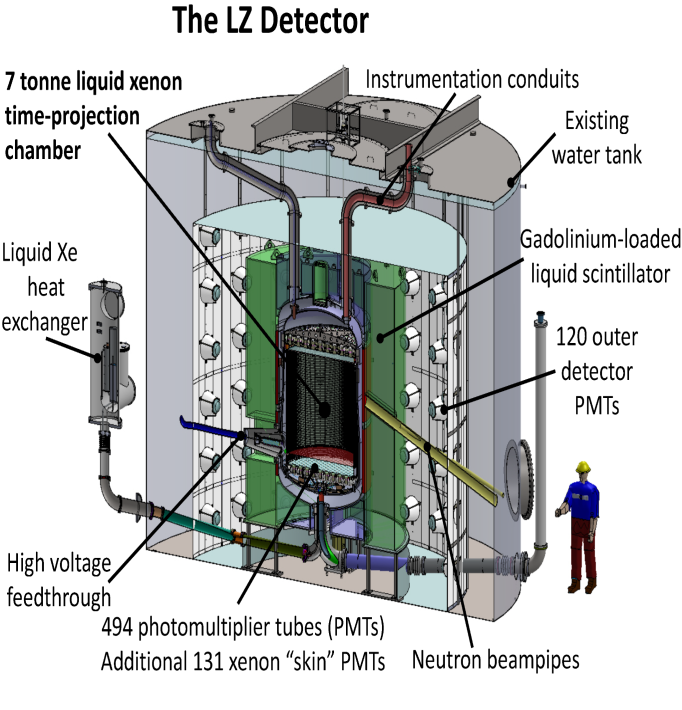Dark Matter Search: LUX-ZEPLIN Experiment and Neutrino Fog
Why in the news?
Scientists from the LUX-ZEPLIN (LZ) experiment have placed the tightest restrictions yet on the identity of dark matter particles, marking a significant development in dark matter research despite not identifying the particle directly.
 What is Dark Matter?
What is Dark Matter?
- Composed of particles without charge, making them “dark” as they don’t emit light.
- Makes up about 27% of the universe, interacting through gravity but not other fundamental forces like electromagnetism.
- Invisible but inferred from gravitational effects on visible matter.
- Comprises 95% of the universe along with dark energy; only 5% is visible matter.
- Difficult to detect due to weak gravitational interaction.
What is Dark Energy?
- A hypothetical form of energy that exerts a negative, repulsive force.
- Explains the accelerated expansion of the universe observed in distant
- Dark energy accounts for 68% of the universe, inferred from gravitational interactions, not directly observed..
Differences Between Dark Matter and Dark Energy
- Dark matter: An attractive force that binds galaxies; interacts with gravity.
- Dark energy: A repulsive force causing the universe to expand faster.
- Dark energy makes up 68% of the universe, dark matter 27%, and visible matter only 5%.
Neutrinos:
- Definition: Subatomic particles with no electric charge, small mass, and left-handed spin.
- Neutrinos are too light to detect dark matter; other particles like Z boson companions have been proposed, but none are yet detected.
- Abundance: Second-most abundant particles in the universe after photons; most abundant matter particles.
- Interactions: Rarely interact with matter, making them challenging to study.
- Neutrino Oscillation: Ability to change types (electron, muon, tau) while travelling.
- Information Transmission: Potential to transmit information across large distances, possibly replacing electromagnetic waves.
- Detection: Large, sensitive detectors built to maximise neutrino interactions.
- India’s Project: Proposed Neutrino Observatory in Theni, Tamil Nadu, to be located in a 1,200-metre-deep cave.
Sources Referred:
PIB, The Hindu, Indian Express, Hindustan Times





